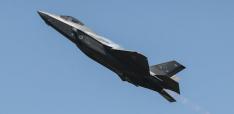Book Review: Quality Peace: Peacebuilding, Victory, and World Order

Quality Peace: Peacebuilding, Victory, and World Order by Peter Wallensteen. New York and Oxford: Oxford University Press, 2015. 250 pp, £64 hardcover 978-0-19-021554-5, £22.99 paperback 978-0-19-021555-2
This book introduces the notion of quality peace as a new tool to address the question that has for decades – if not centuries – captured the attention of thinkers, activists, policy-makers, and practitioners: what are the conditions and strategies that enable us to avoid the recurrence of war? How can peace be sustainable over time? In the preface of his book, leading peace researcher, Peter Wallensteen inscribes his work in a tradition of thinking about war and peace in which ideas and actions that appeared utopian at the time, such as democratic rule or limitation of armaments, have finally been successful. The concept of quality peace aims to capture what are the conditions of a postwar peace that may reassure us that conflict will not appear again. The aim is ambitious, and Wallensteen’s effort is remarkable.
Quality peace aims to overcome the traditional dichotomy of negative versus positive peace and is composed of three standards: security, dignity, and predictability. According to Wallensteen, “Quality peace means the creation of post-war conditions that make the inhabitants of a society (be it an area, a country, a region, a continent, or the planet) secure in life and dignity now and for the foreseeable future” (p. 6). These are the factors that would prevent war recurrence.
The book deals with three types of conflict and the issues of security, dignity, and durability. It systematically reviews post-World War II experiences as well as peacebuilding efforts after the Cold War, in order to compare three different types of conflict: two of them intra-state (internal wars over government, and wars with a territorial or separatist cause, referred to as wars of state formation), and crosses those variables with two different outcomes: victory consolidation versus a negotiated ending through a peace agreement. Then “quality peace” is also addressed in relation to global conditions, finding a linkage between different levels of world order.
The author uses the Uppsala Conflict Data Program and the Kroc Institute’s Peace Accords Matrix for the three types of conflicts to be analyzed, as well as scholarship work. The first two chapters review the leading works on peace, peacebuilding (a stage reached through an agreement) and victory, and define the concept and elements of quality peace. It is evident here that the results of negotiated agreements (peacebuilding) have captured far more scholarly attention, while the results of victory consolidation have been largely neglected. Both approaches to postwar conditions are evaluated with regard to the criteria for quality peace.
The next three chapters apply the concept of quality peace to the three types of conflict. The first is a systematic study of how civil wars have ended after the end of the Cold War, and how different war outcomes (victory or agreement) impact on the recurrence of civil war. In concrete terms, democracy is most likely in negotiated settlements, along with transparency and accountability, and these are also the cases when international involvement (UN) is most likely, in the form of peacebuilding operations (p. 90).
State formation conflicts are wars of separatism and analyzed as different from civil wars. They are found to be more protracted, and the quality of peace depends on the type of solution (victory by one of the sides or agreement), as well as on the outcome, i.e., the formation of a new state or increased autonomy.
Relations (and war) between States are analyzed in the following chapter – an innovative approach as they are seldom a subject of peacebuilding studies. The effort to include both intra- and inter-State problems is remarkable. As the author points out, regarding the scholarship in both situations, “they appear as two different worlds in terms of the questions asked and the ways they are answered” (p. 55). Here, the standards of security, dignity and predictability are best reached when we include the development of democratic structures on both sides, shared memberships in a regional organization, and a degree of military integration into a larger framework. In this area, however, the author underlines a “lacuna in research as well as in policy” (p. 163).
The two following chapters explore the concept of quality peace in relation to the world order during the Cold War and the post-Cold War period. It finds that, in the latter, there is a close interaction between the local level of conflict and the global relations between major powers; for example, the number of major powers that are democracies affects whether intra-state conflicts are solved through democratic solutions. The same is the case in relation to international organizations, including the UN, regional organizations and the EU. Their significance in building a world order based on quality peace is emphasized, at the same time as the shortcomings of these organizations are scrutinized.
Finally, Wallensteen reaches twenty-five conclusions by analyzing all of the relationships of the book. The main conclusion is that a victory consolidation with dignity for the loser and security for all parties may generate some quality: but negotiated settlements are the most likely to give quality outcomes. Democracy building, transparency in relationships and settling territorial disputes is essential (which is why wars resulting in state separations are the most difficult). International organizations’ major role in peacebuilding needs to continue, especially in prevention, mediation, and peacebuilding in conflicts with heavy major power interest.
The book ends with a call for more research on the conditions of dignity, security, and predictability, each of which needs more investigation. At the end, “we may see the contours of a theory of quality peace, where the ways the former adversaries treat each other becomes crucial, whether in victory or in peace agreements” (p. 209).
Wallensteen uses both quantitative data and the exhaustive analysis of case studies to capture the complexity of war and peace and to address which types of conflict, and which type of ends, better allow us to reach the conditions of quality peace and break the cycles of war recurrence. This book contains impressive statistical data, sometimes used to revise the findings of previous scholarly work; deep exploration of diverse case studies; and impressive lists of notes and references. It is an excellent reference work for all scholars or students of international relations, peace, and conflict.
Mabel González Bustelo is an international advisor and consultant in peace and security, Contributor Analyst to Wikistrat, and former Fellow of the Global South Unit for Mediation (BRICS Policy Centre, Brazil). @MabelBustelo


